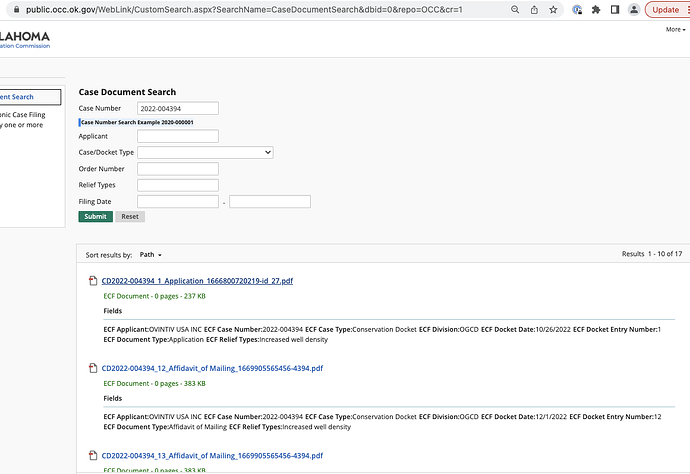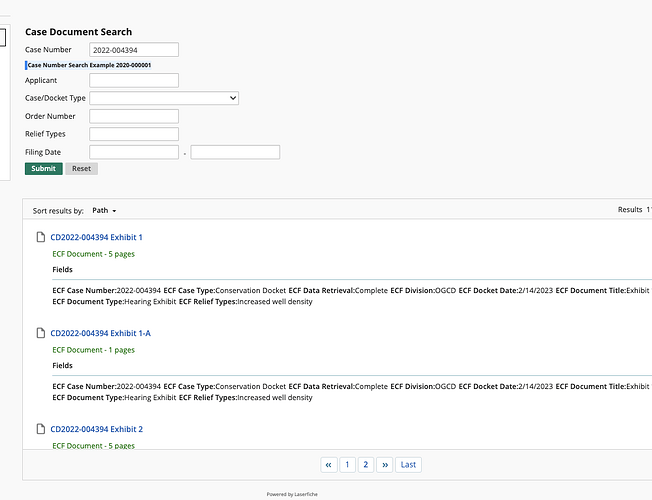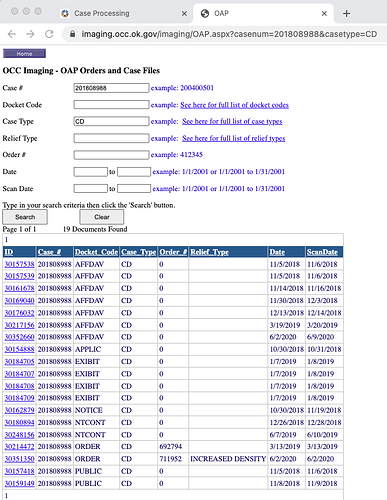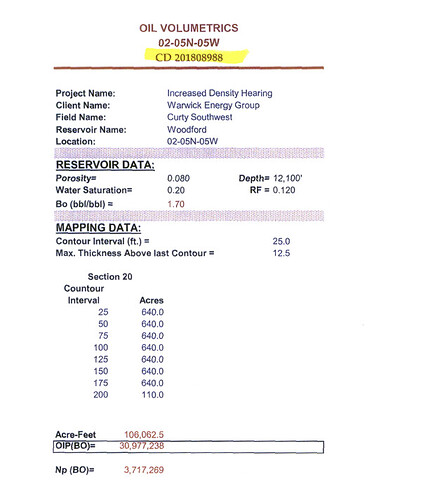Two increased density wells in Section 27 , 7 North, 5 West were authorized in early March. Case 2022-004394. My question is this significant oil and gas? I see the numbers in the case, but it is Greek to me lol. Thanks in advance for information!
“Significant” is always relative. But in general, yes, this is a good set of recoverable oil and gas numbers for this part of Oklahoma. Go to Exhibit 1-A where is says that there is approximately 4.8 million bbls of oil remaining and 14.66 BCF of gas in section 27. I suspect that you will end up with more than two additional wells. They have left room for them.
Go to exhibit 1 and it shows the map of the planned wells. Note that the sections surrounding have multiple wells (a good sign)
The revenue is going nicely now, should I expect it to continue
Wells decline over time as the reservoir is depleted in pressure and fluids. Your royalties are based upon the volumes and the price paid for the products. Additional drilling will boost your royalties for a season and they will eventually also decline over time. Increased density is a way to drain the reservoir more efficiently and get more product (and revenue) out of the ground.
Where would I find an Exhibit 1-A that tells me the approximate bbls of oil remaining in my section (10-5-5)? Would this info be for a currently producing well?
Thanks
I did not find any increased density applications for your section. Therefore, there are no exhibits on file at the OCC which would provide the operators estimates of oil and gas in place or remaining reserves for existing wells in Sec. 10-5N-5W. This information is provided to justify additional drilling.
The case is in the new search system for Chickasaw. Electronic Case Filing Pick the blue box and enter the case number.
Page two has the links for Ex 1 and Ex 1-A
The section is 27-7N-5W.Graceful, you are in a different section. I do not see an increased density case for that section. If they do decide to drill additional wells, they will mail you a copy of the increased density case.
I find it useful to hunt for increased density cases in the contiguous sections close to me if I cannot find one on my own section. Warwick-Jupiter filed one back in 2018 for section 2. At that time, they said that they needed an additional five wells. You can find that case 201808988. Yellow Sub wells.
Exhibit 30184708 The recoverable is listed as 3.717 MMBO with 50% from section 2. Woodford. They estimate about 600,000 bbls per well. They did not list the gas back then, so not so helpful. Your Black Mesa wells has produced 335,275 bbls of oil so far. And 1.77BCF of gas. Time will tell if Camino decides to infill drill your section.M_Barnes today i received a copy of case no. 2022-004386 for multiunit horizontal well, I am assuming that is more good news? I sure appreciate your shared knowledge! Thanks
Did you mean 335,275 bbls of OIL produced so far?
Yes, I meant oil. Will fix it.
Yes, good news. Keep all the information that comes your way. I find it helpful to the cases in order by their number and then in date order with the newest on the top. That way you can follow the progress. They frequently have exhibits attached, so you might want to flag them for reference.
Is this (The Black Mesa) considered a good well? Thanks
“Good” is relative. Black Mesa is reasonable given the information from the Yellow Sub wells.
I am still confused about fault lines. I read that oil sometimes pools in the fault line, which seems to be a good thing. But fault lines make it more difficult to drill (I think). So are fault lines a good or bad thing?
The answer about faults is complicated and depends upon the situation. If a porous zone with lots of holes and inter-connectedness (permeability) is faulted against a tight zone (low porosity and permeability) and the reservoir is tilited in the correct direction, then the porous zone might collect hydrocarbons as they migrate upward.
If a porous and permeable zone is faulted against another porous and permeable zone, then the hydrocarbons can leak out. They will usually eventually migrate upwards and might end up in another favorable position, so bad for the lower zone, maybe good for the upper zone.
Also pressures can be different on either side of a fault (or the same), so sometimes, faults can cause drilling problems.
No simple answer…
Thank you Martha. It is complicated.
This topic was automatically closed after 90 days. New replies are no longer allowed.



